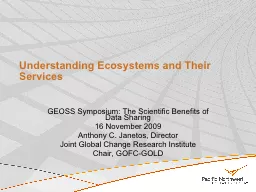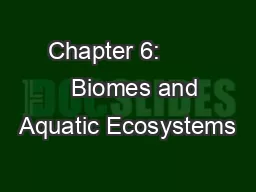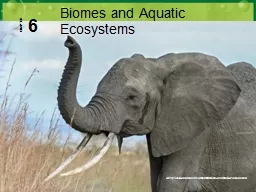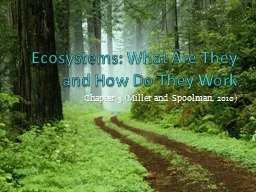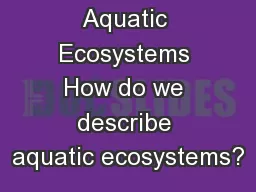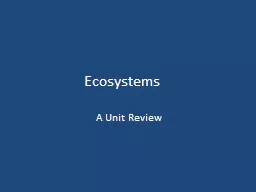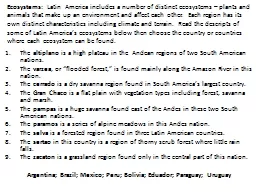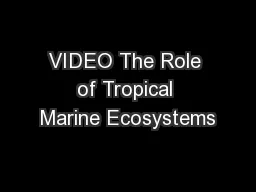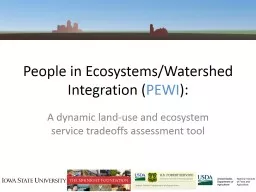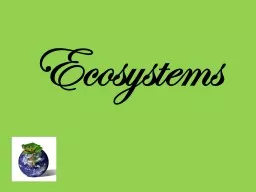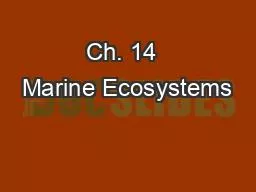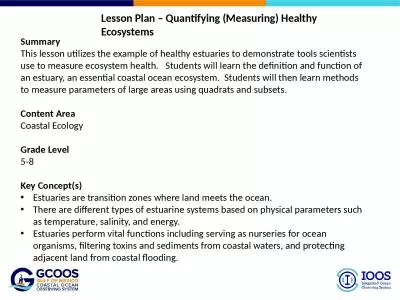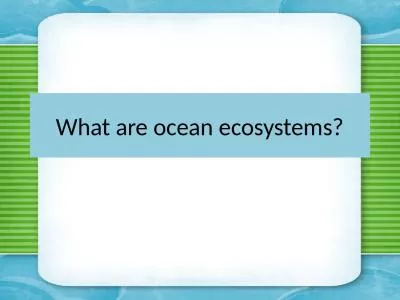PPT-Understanding Ecosystems and Their Services
Author : faustina-dinatale | Published Date : 2016-08-01
GEOSS Symposium The Scientific Benefits of Data Sharing 16 November 2009 Anthony C Janetos Director Joint Global Change Research Institute Chair GOFCGOLD Outline
Presentation Embed Code
Download Presentation
Download Presentation The PPT/PDF document "Understanding Ecosystems and Their Servi..." is the property of its rightful owner. Permission is granted to download and print the materials on this website for personal, non-commercial use only, and to display it on your personal computer provided you do not modify the materials and that you retain all copyright notices contained in the materials. By downloading content from our website, you accept the terms of this agreement.
Understanding Ecosystems and Their Services: Transcript
Download Rules Of Document
"Understanding Ecosystems and Their Services"The content belongs to its owner. You may download and print it for personal use, without modification, and keep all copyright notices. By downloading, you agree to these terms.
Related Documents

